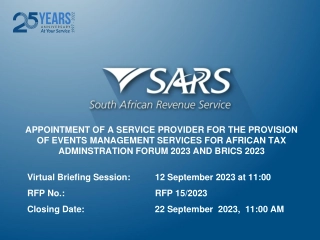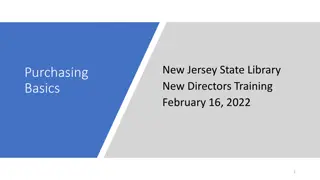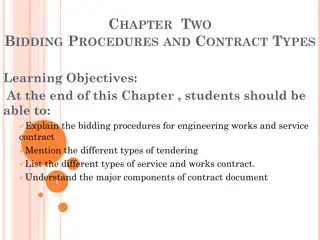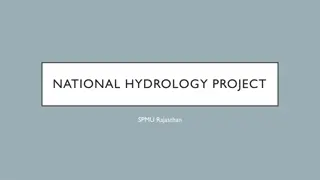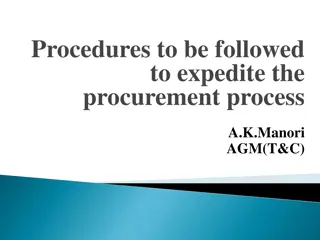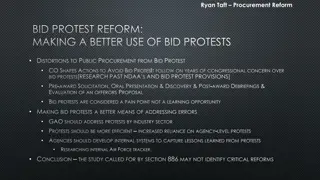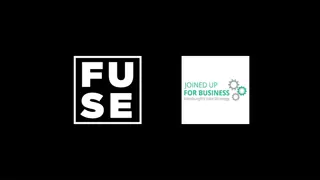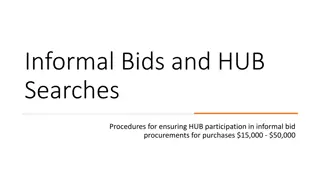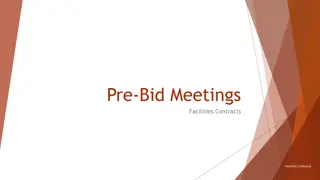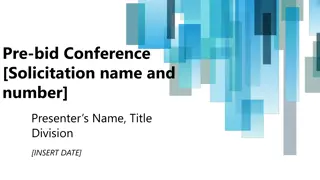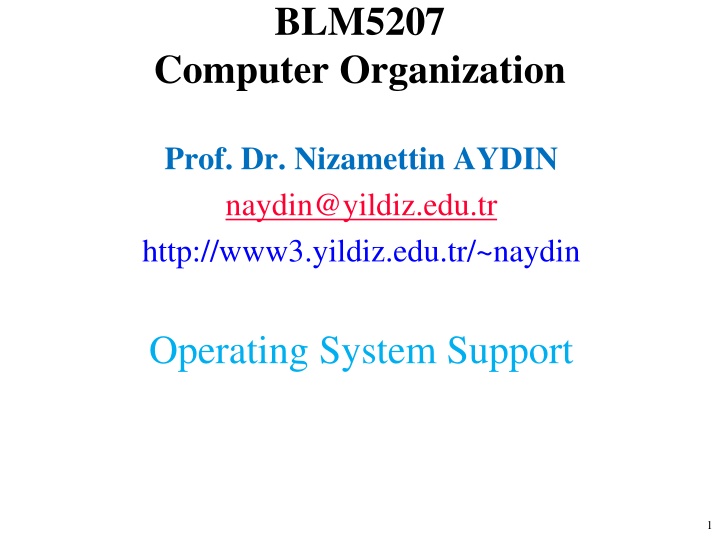
Operating Systems: Objectives, Functions, and Services
Explore the objectives and functions of operating systems, including types of OS, resource management, and main resources managed. Learn about the layers and views of a computer system, along with the services provided by operating systems for program creation, execution, and more.
Download Presentation

Please find below an Image/Link to download the presentation.
The content on the website is provided AS IS for your information and personal use only. It may not be sold, licensed, or shared on other websites without obtaining consent from the author. If you encounter any issues during the download, it is possible that the publisher has removed the file from their server.
You are allowed to download the files provided on this website for personal or commercial use, subject to the condition that they are used lawfully. All files are the property of their respective owners.
The content on the website is provided AS IS for your information and personal use only. It may not be sold, licensed, or shared on other websites without obtaining consent from the author.
E N D
Presentation Transcript
BLM5207 Computer Organization Prof. Dr. Nizamettin AYDIN naydin@yildiz.edu.tr http://www3.yildiz.edu.tr/~naydin Operating System Support 1
Outline Objectives and Functions of OS Operating System Services Types of Operating System Interactive Batch Single program Multi-programming Scheduling Long Term Scheduling Medium Term Scheduling Short Term Scheduler Swapping Partitioning Relocation Paging Virtual Memory Segmentation 2
Operating System A computer consists of modules of three basic types that communicate with each other. CPU Memory Input/Output Management of these modules is done by OS. 3
Objectives and Functions of OS Convenience An operating system makes a computer easier to use Efficiency An operating system allows better use of computer resources 4
Operating System Services Program creation Program execution Access to I/O devices Controlled access to files System access Error detection and response Accounting 6
O/S as a Resource Manager A computer is a set of resources for the movement, storage, and processing of data and for the control of these functions The O/S is responsible for managing these resources O/S is a program executed by the processor The O/S frequently relinquishes control and must depend on the processor to allow it to regain control 7
Types of Operating System Interactive User/programmer interacts directly with the computer through a keyboard/display terminal Batch Opposite of interactive. Rare Single program (Uni-programming) Works only one program at atime Multi-programming (Multi-tasking) Processor works on more than one program at a time 9
Early Systems Late 1940s to mid 1950s No Operating System Programs interact directly with hardware Two main problems: Scheduling: Setup time 10
Simple Batch Systems Resident Monitor program Users submit jobs to operator Operator batches jobs Monitor controls sequence of events to process batch When one job is finished, control returns to Monitor which reads next job Monitor handles scheduling 11
Job Control Language Instructions to Monitor Usually denoted by $ e.g. $JOB $FTN ... Some Fortran instructions $LOAD $RUN ... Some data $END 13
Desirable Hardware Features Memory protection To protect the Monitor Timer To prevent a job monopolizing the system Privileged instructions Only executed by Monitor e.g. I/O Interrupts Allows for relinquishing and regaining control 14
Multi-programmed Batch Systems I/O devices very slow When one program is waiting for I/O, another can use the CPU Following illustrates the problem: the calculation concerns a program that processes a file of records and performs, on average, 100 processor instructions per record. In this example the computer spends over 96% of its time waiting for I/O devices to finish transferring data. System utilization example 15
Single vs Multi-Programming Single program Multi-Programming with two programs 16
Single vs Multi-Programming Multi-Programming with Three Programs 17
Example- benefits of mutiprogramming Consider a computer with 250 MBytes of memory, a disk, a terminal, and a printer. The programs JOB1, JOB2, and JOB3 are submitted for execution at the same time with the following attributes: We assume minimal processor requirements for JOB2 and JOB3 and continuous disk and printer use by JOB3. For a simple batch environment, these jobs will be executed in sequence 18
Time Sharing Systems Allow users to interact directly with the computer i.e. Interactive Multi-programming allows a number of users to interact with the computer 21
Scheduling Scheduling is key to multi-programming A process is: A program in execution The animated spirit of a program That entity to which a processor is assigned Types of scheduling: 22
Long Term Scheduling Determines which programs are submitted for processing i.e. controls the degree of multi-programming Once submitted, a job becomes a process for the short term scheduler (or it becomes a swapped out job for the medium term scheduler) 23
Medium Term Scheduling Part of the swapping function (later ) Usually based on the need to manage multi- programming If no virtual memory, memory management is also an issue 24
Short Term Scheduler Also known as Dispatcher, executes frequently and makes the fine grained decisions of which job to execute next i.e. which job actually gets to use the processor in the next time slot 5 define states in a process state: New: A program is admitted by the high-level schedular but is not yet ready to execute Ready: The process is ready to execute Running: The prcess is being executed Waiting: The process is suspended, waiting for some system resources Halted: The process has terminated and will be destroyed by the O/S. 25
Memory Management Task of dynamically subdivison of memory Effective memory management is vital in a multiprogramming system Uni-program Memory split into two One for Operating System (monitor) One for currently executing program Multi-program User part is sub-divided and shared among active processes 31
Swapping Problem: I/O is so slow compared with CPU that even in multi-programming system, CPU can be idle most of the time Solutions: Increase main memory Expensive Leads to larger programs Swapping 32
What is Swapping? Long term queue of processes stored on disk Processes swapped in as space becomes available As a process completes it is moved out of main memory If none of the processes in memory are ready (i.e. all I/O blocked) Swap out a blocked process to intermediate queue Swap in a ready process or a new process But swapping is an I/O process 33
Partitioning Splitting memory into sections to allocate to processes (including Operating System) Fixed-sized partitions May not be equal size Process is fitted into smallest hole that will take it (best fit) Some wasted memory Leads to variable sized partitions 35
Variable Sized Partitions (1) Allocate exactly the required memory to a process This leads to a hole at the end of memory, too small to use Only one small hole - less waste When all processes are blocked, swap out a process and bring in another New process may be smaller than swapped out process Another hole 37
Variable Sized Partitions (2) Eventually have lots of holes (fragmentation) Solutions: Coalesce Join adjacent holes into one large hole Compaction From time to time go through memory and move all hole into one free block (c.f. disk de-fragmentation) 38
Relocation No guarantee that process will load into the same place in memory Instructions contain addresses Locations of data Addresses for instructions (branching) Logical address relative to beginning of program Physical address actual location in memory (this time) Automatic conversion using base address 40
Paging Split memory into equal sized, small chunks - page frames Split programs (processes) into equal sized small chunks - pages Allocate the required number page frames to a process Operating System maintains list of free frames A process does not require contiguous page frames Use page table to keep track 41
Virtual Memory Demand paging Do not require all pages of a process in memory Bring in pages as required Page fault Required page is not in memory Operating System must swap in required page May need to swap out a page to make space Select page to throw out based on recent history 44
Thrashing Too many processes in too little memory Operating System spends all its time swapping Little or no real work is done Disk light is on all the time Solutions Good page replacement algorithms Reduce number of processes running Fit more memory 45
Bonus We do not need all of a process in memory for it to run We can swap in pages as required So - we can now run processes that are bigger than total memory available! Main memory is called real memory User/programmer sees much bigger memory - virtual memory 46
Translation Lookaside Buffer Every virtual memory reference causes two physical memory access Fetch page table entry Fetch data Use special cache for page table TLB 48

